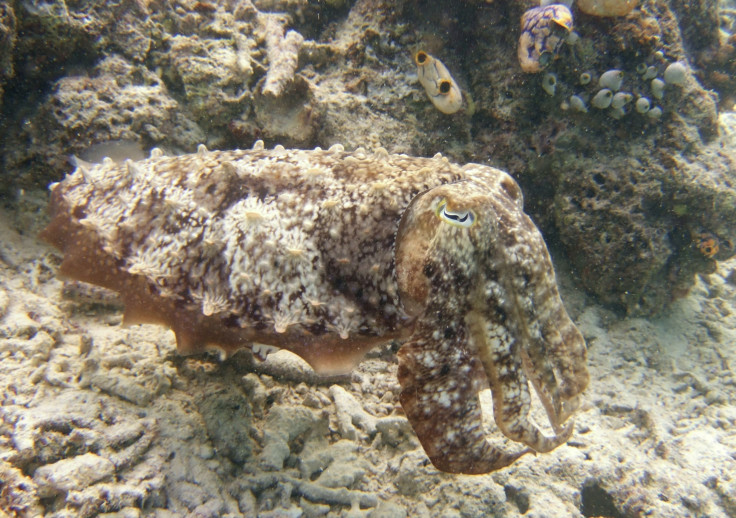Secrets Of The 'Chameleon Of The Sea:' Cuttlefish’s Ability To Change Colors Can Inspire Protective Camouflage For Soldiers

A team of scientists at Harvard University and the Marine Biological Laboratory, or MBL, in Woods Hole, Mass., have found that the cuttlefish’s ability to dynamically change its colors can inspire improved protective camouflage for soldiers on the battlefield.
The cuttlefish, also known as the “chameleon of the sea,” can rapidly change both the color and pattern of its skin, helping the creature blend in with its surroundings to avoid predators. And, scientists said in the study that they have identified new details of the “sophisticated biomolecular nanophotonic system,” which is responsible for the cuttlefish's color-changing ways. The cuttlefish is part of the cephalopod family, which includes better-known marine animals like the squid and octopus.
“Nature solved the riddle of adaptive camouflage a long time ago,” Harvard's Kevin Kit Parker said in a statement. “Now the challenge is to reverse-engineer this system in a cost-efficient, synthetic system that is amenable to mass manufacturing.”
In addition to military camouflage outfits, the new findings could also have applications in materials for paints, cosmetics and consumer electronics, according to the study published in the Journal of the Royal Society Interface on Wednesday.
To regulate its color, the cuttlefish relies on a vertically arranged assembly of three optical components: the leucophore, a near-perfect light scatterer that reflects light uniformly over the entire visible spectrum; the iridophore, a reflector comprising a stack of thin films; and the chromatophore. These layers enable the animal's skin to selectively absorb or reflect light of different colors.
“Chromatophores were previously considered to be pigmentary organs that acted simply as selective color filters,” Leila F. Deravi, a research associate in bio-engineering at Harvard and the study’s co-author, said in a statement. “But our results suggest that they play a more complex role; they contain luminescent protein nanostructures that enable the cuttlefish to make quick and elaborate changes in its skin pigmentation.”
When the cuttlefish triggers its coloration system, the surface area can change as much as 500 percent -- a feat that makes it extremely challenging for scientists to replicate the mechanisms used by the cuttlefish. However, Parker, an Army reservist who has completed two tours of duty in Afghanistan, believes that using the cuttlefish to find a biologically-inspired design for new types of military camouflage is possible.
“Throughout history, people have dreamed of having an 'invisible suit’,” Parker said. “Nature solved that problem, and now it's up to us to replicate this genius so, like the cuttlefish, we can avoid our predators.”
Check out the video here from MBL:
© Copyright IBTimes 2025. All rights reserved.






















